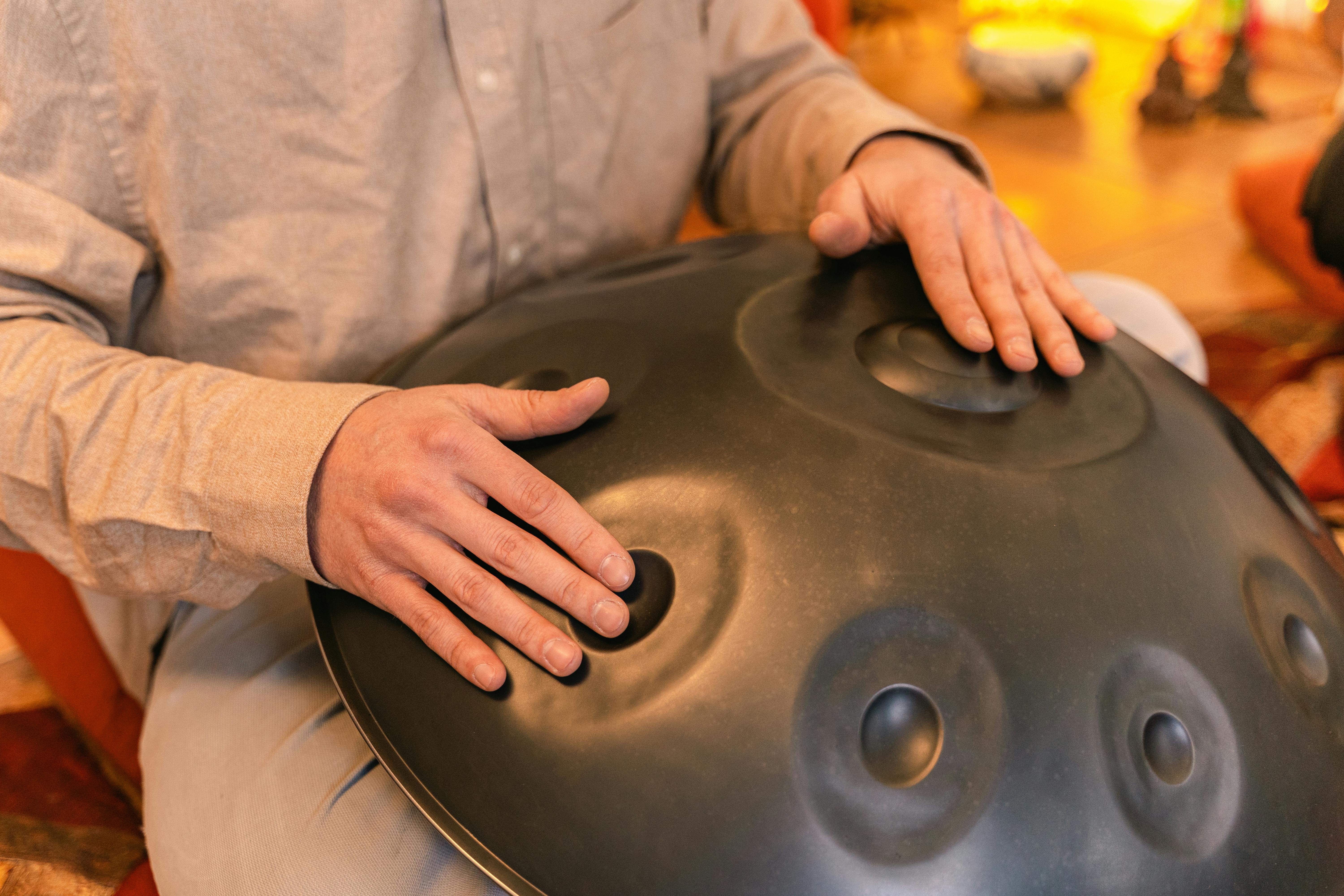 Currently the arranger for the BP Renegades in Trinidad and Tobago, and a world-renowned soloist, Duvone Stewart has built a reputation for innovation on the Steelpan.
Currently the arranger for the BP Renegades in Trinidad and Tobago, and a world-renowned soloist, Duvone Stewart has built a reputation for innovation on the Steelpan.
PM sat down with Stewart to discuss his work, goals and thoughts on the future of Pan.
How did you get started with Pan?
I began my musical career at the tender age of six. I was tutored by Gwyneth Armstrong in both theory and practical music on the piano. During this period I performed creditably at Trinity Music Exams- an initiative of the London School of Music. Consequently, my joy for music blossomed. After accompanying my parents to a steel orchestra practice one evening, I picked up a pair of tenor pan sticks and the rest was history. My fingers began to tickle me immensely. Little did I know that I made a connection that would transform my life forever. In less than two hours of playing around with the instrument, I was able to play “Mary Had A Little Lamb” with my eyes closed. At that point I ran to my mother and expressed my desire to learn to play the Steelpan. After seeing what I was able to accomplish in a short space of time, my mother, Virginia welcomed the move, and that is how I got started with the Steelpan. Then, at the age of eight, I started playing with the ‘Trintoc Tobago All Stars Steel Orchestra’ where I learned to master the instrument.
What do you love most about the instrument?
The instrument is magical. When one listens to the sounds that emanate from the playing of a wooden stick with rubber at the head on an oil drum, you become mesmerized. The wide range of tones; how euphoric! Additionally, the instrument is very versatile. A player can play the melody of a song with the Steelpan and utilize that same Pan to play accompanying parts. The capabilities of the Steelpan expanded tremendously with the creation of an electronic Steelpan, the E-Pan an invention of Salmon Cupid. Now you can be on an E-pan and have a full orchestra while performing solo or even utilize the E-pan and allow the Steelpan to sound like a violin, a piano, a saxophone or any other instrument you could think of. The magical nature and colossal capabilities of the Steelpan are what I love most about the instrument. Just pure ecstasy!
Who were your biggest musical influences, both Pan and non-Pan related?
My Pan-related influences were Gwyneth Armstrong, Dr. Jit Samaroo, Robert Greenidge, Len ‘Boogsie’ Sharpe, Liam Teague, Andy Narell, Ken ‘Professor’ Philmore, Leon ‘Foster’ Thomas, Seion Gomez, Arddin Herbert, and the list goes on.
Mrs. Gwyneth Armstrong was my very first Music teacher and at the time was the Trintoc Tobago All Stars Steel Orchestra musical arranger and conductor. Her discipline, humility and prowess as a musician have impacted my life tremendously. Dr. Jit Samaroo is a luminary in the art form who has made such an indelible mark locally and internationally with his magnificent arranging style. Additionally, Robert Greenidge has served as my musical father throughout my musical journey.
My non-Pan related influences include Stevie Wonder, Mario Canonage, Michel Camilo, Tabou Combo, Kassav, Bebo Valdez and so much more.
Though I had no direct contact with Stevie Wonder, he influenced me tremendously. He exudes humility, passion and professionalism. Even though he possesses what are seemingly four out of five senses, he still delivers high quality music. Stevie, like many others, exemplifies that the music industry is not just about music but also about being a humanitarian. Moreover, Mario Canonage, a pianist from Martinique, is the crème de la crème of Caribbean Jazz. In 2002 or 2003, when I had the first opportunity to visit France, Mario was a member of the first ever band I played with there. It was surreal meeting him in person since to me he was a legend, one of my favorites.
What year did you first arrange for Panorama, how did you get into it, and how did you enjoy your 2014 Panorama experience?
I first arranged in 2001 for ‘La Horquetta Pan Groove.’ My commencement into the arranging realm emanated from an invitation from Ross Thomas, a member of this steel band. The experience of an arranger is simply phenomenal. I continue to be in awe and forever grateful to God when I see how my arranging capabilities continue to expand to unprecedented levels from my inception in 2001 to present. In retrospect, being trademarked as an arranger is like the start to self- actualization. My 2014 performance was ecstatic. Though the preparations were hectic, the results were phenomenal. I arranged for three bands ‘San Jan Eastside Symphony’ and ‘Pan Elders,’ who placed first in the Small and Medium band categories, and ‘BP Renegades,’ who placed third in the Large band category. I continue to thank God for these successes.
What does it mean to you to have your 2014 Panorama competition piece, In de Minor, inducted into the International Steel Band Hall of Fame?
Being cognizant of the history of the inductees on the Hall of Fame, luminaries and virtuosos like Dr. Jit Samaroo, Len ‘Boogsie’ Sharpe, Ray Holman and even Andy Narell, I feel totally humbled and extremely honoured to have my name etched among these stalwarts. I also feel vindicated to know that hard work has it rewards and that my efforts are appreciated on an international level.
At the Virginia Beach Panorama this past May, we had a chance to catch up with Ray Holman, who discussed the difficulty arrangers face in pairing their style with the embedded style of an established band. This is in light of what you likely have experienced with the Renegades, considering how engrained the style of Dr. Jit Samaroo (the former band leader) was in that band. Is there any truth to that? If so, what were some of your biggest challenges in that regard?
Firstly, you must understand that I was not chosen to be the arranger of BP Renegades or the successor to Dr. Jit Samaroo by chance. I was privileged to learn Dr. Jit’s style from 1987 to his last arrangement, and even now I constantly listen to recordings of his arrangements. Consequently, I am aware of the type of music that the Renegades are accustomed to and the style they require. Thus, like any skilled arranger I have fused my own style with the style that my clients require in my attempt to ensure that they are totally satisfied with the product. I continue to allow their music to evolve. Most importantly, their confidence in me has allowed me to be confident in the product that I have given to them over the last three years. Moreover, there are really no challenges for me when it comes to utilizing my own style. Music is a business and every customer or client requires a product and I ensure that I give my clients the products that they require.
What are your immediate and future goals with Pan as an instrument?
My overall goals are to increase the number of my recordings, workshops, symposiums, lectures, and to ensure that the Steelpan and its music are given the international respect that they deserve. Additionally, I also would like to pave way to have the Steelpan inducted into the different award groups like the Grammy awards.
Will you be arranging for NY Panorama this year? How about Panorama 2015? What bands?
Yes, indeed! I love New York Panorama and I will be arranging for the band ‘CASYM’ both this year and next year. And for Trinidad & Tobago Panorama for the BP Renegades, Pan Elders & San Juan East Symphony.
What are your feelings regarding the view of Pan globally as an instrument and how we as a community can change the stigma attached to it as being purely an “island” novelty?
Indeed, tremendous strides have been made with regards to the Steelpan internationally. The Steelpan is used as either a solo instrument or incorporated into an orchestra in Europe, Canada and many other Caribbean countries for concerts, festivals and many other types of functions. Furthermore, the Steelpan is used to bridge the gap between different genres of music. Surely, it is not a mere novelty in the international realm. I am in admiration of the respect that the Steelpan is given internationally. I believe that the requisite powers in Trinidad and Tobago can do more to ensure that the instrument is given the respect a national instrument deserves. Funding more Steelpan related programs, standardizing the instrument and just giving greater respect to steel pan players will undoubtedly change any stigma that is related to the instrument.
Do you teach privately? If so, what are some techniques you can pass on to players to help them improve as soloists and as ensemble players?
I do not teach privately. However, I constantly interact with both young and old persons in various spheres at Steelpan theatres, workshops, while lecturing and other occasions, and I constantly reiterate the three basic virtues that will make anyone not only an exceptional player but also a phenomenal individual. Firstly, always be professional. Secondly, be entertaining, and lastly, constantly recreate yourself and your music. With regards to a player’s techniques, there are certain basic techniques every player would learn, just practice these consistently and expand on the style that the player is most comfortable with in order to develop the player’s own style and musical identity.







